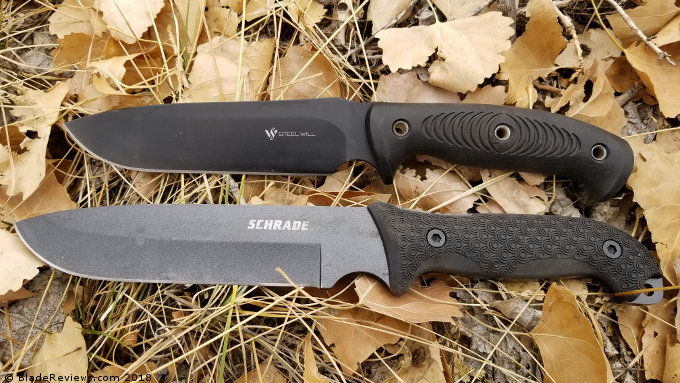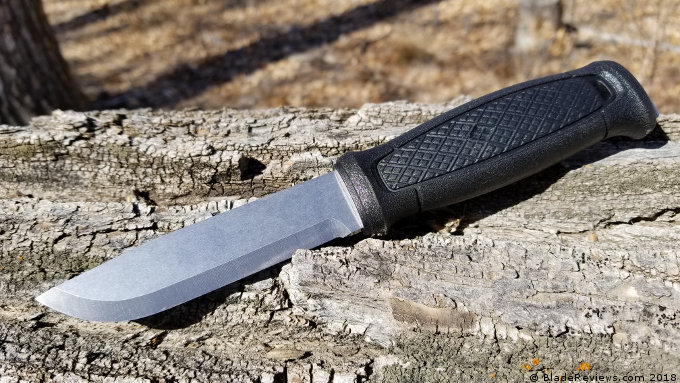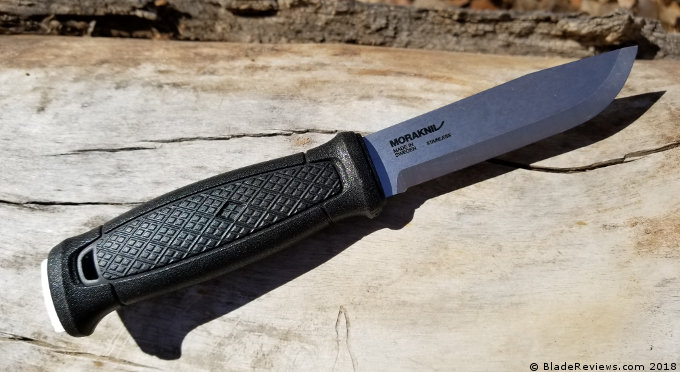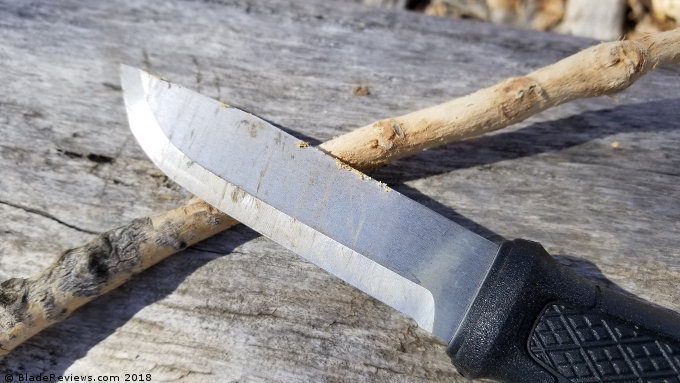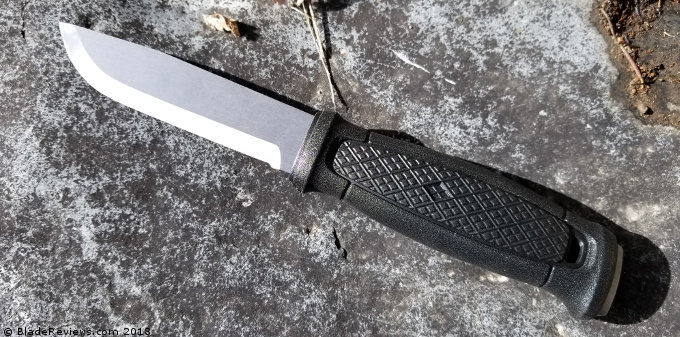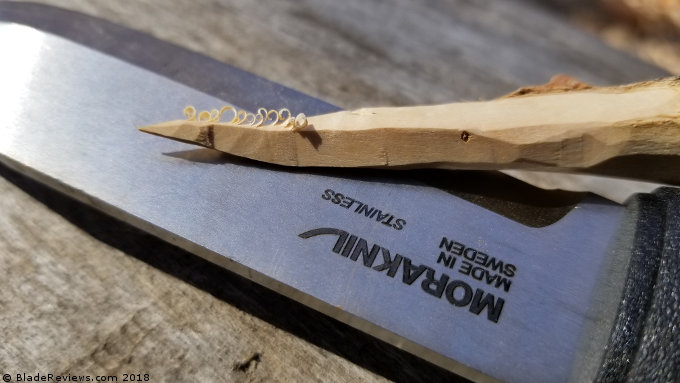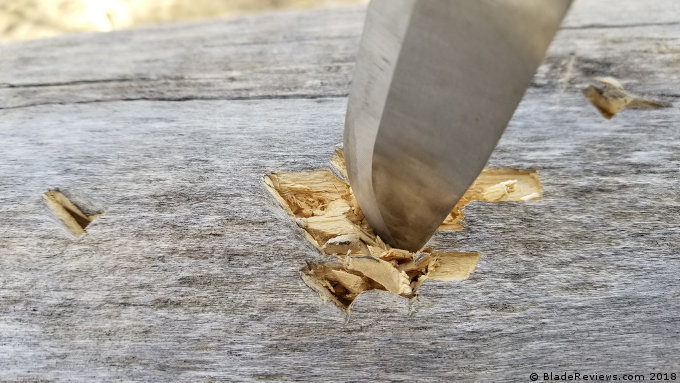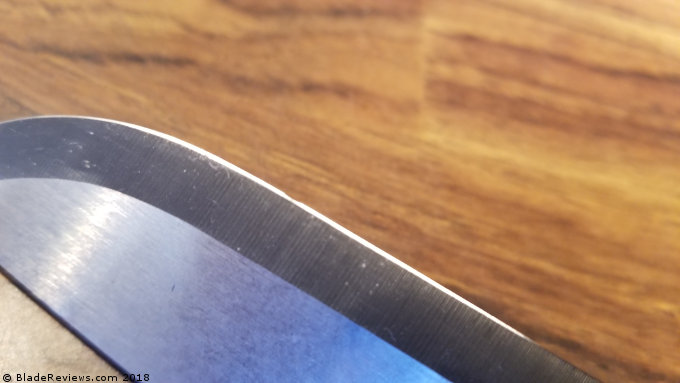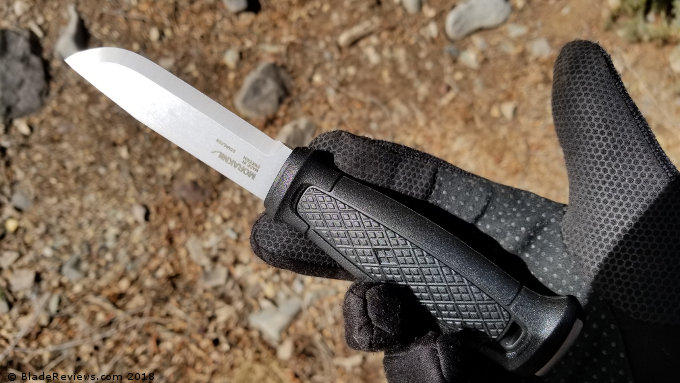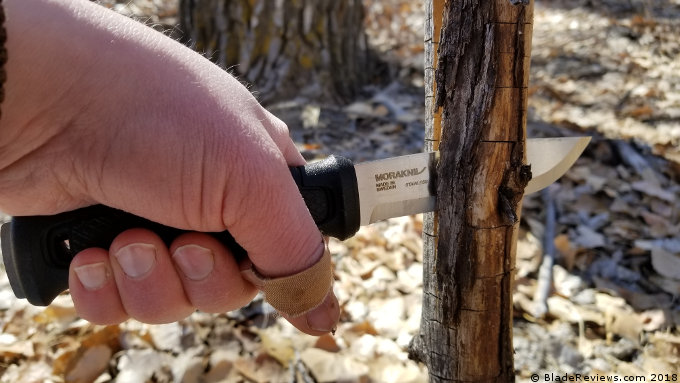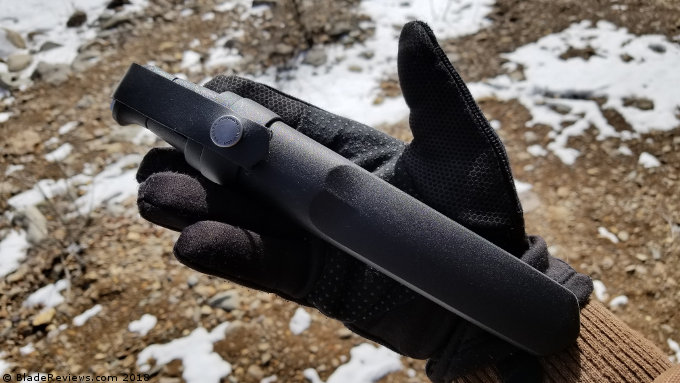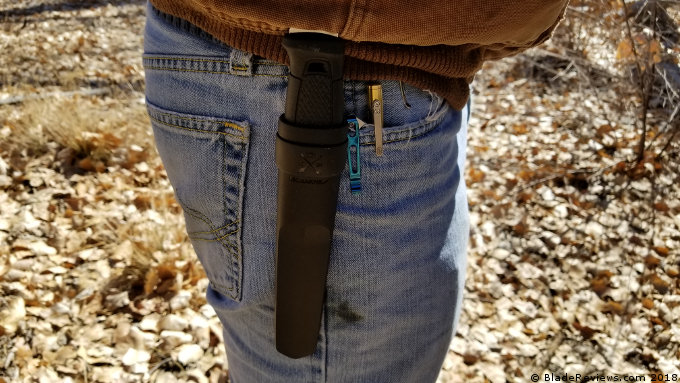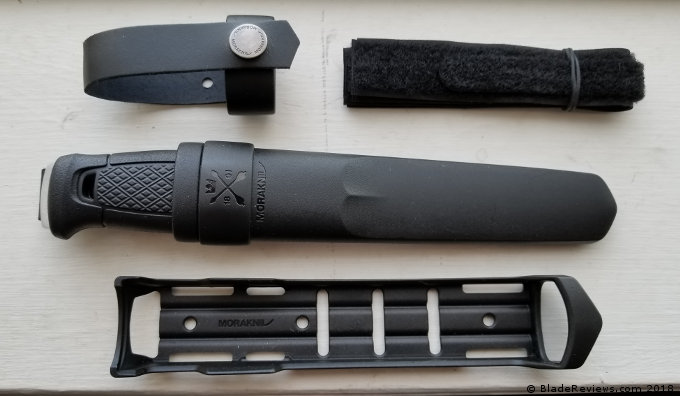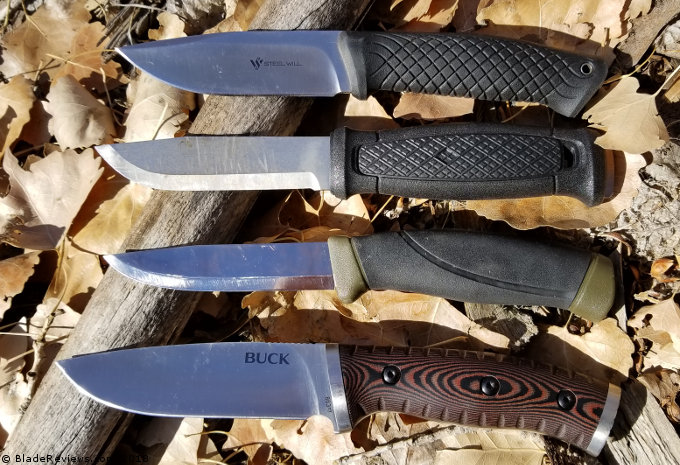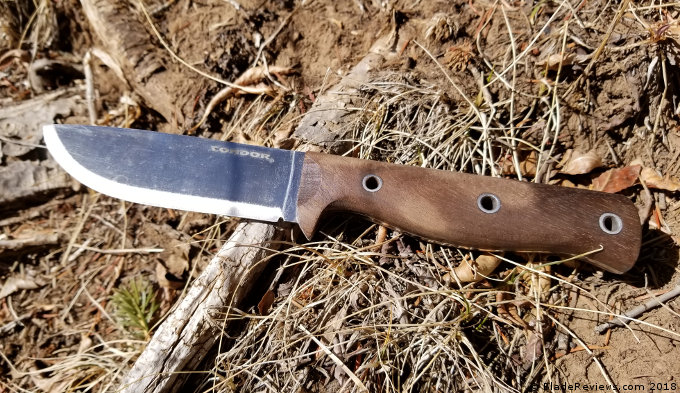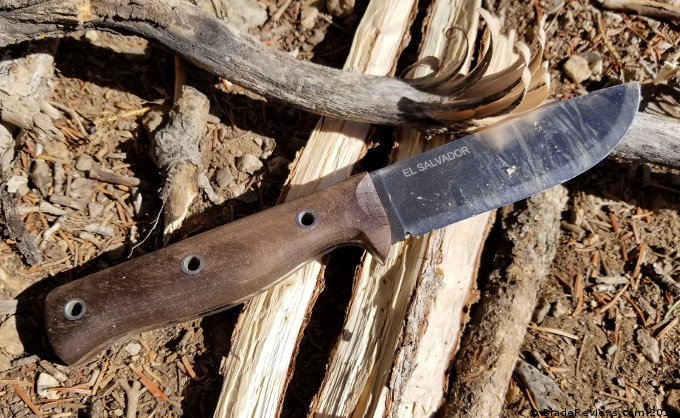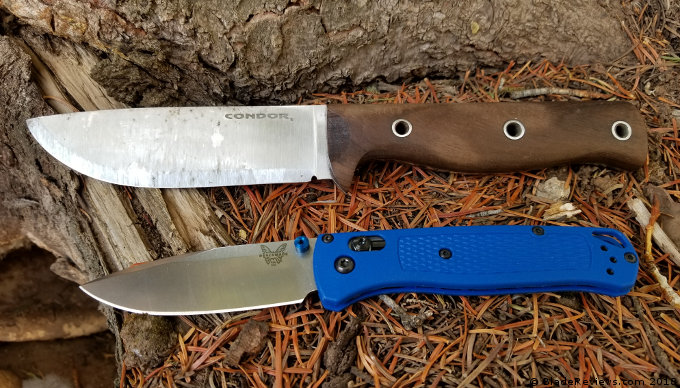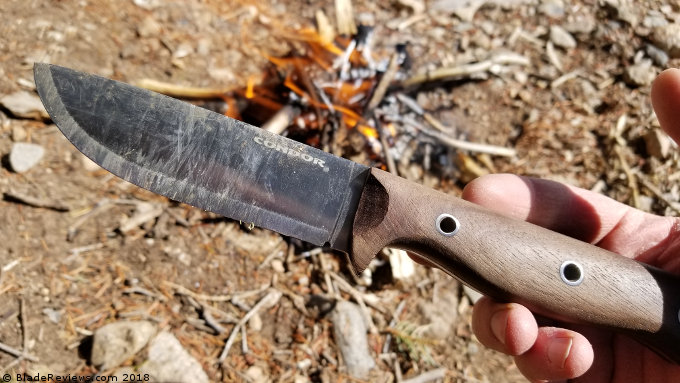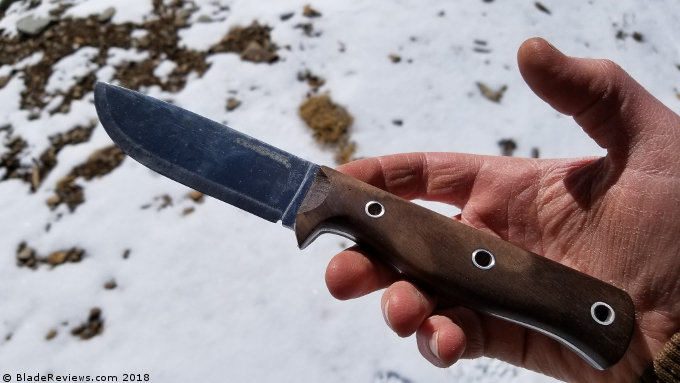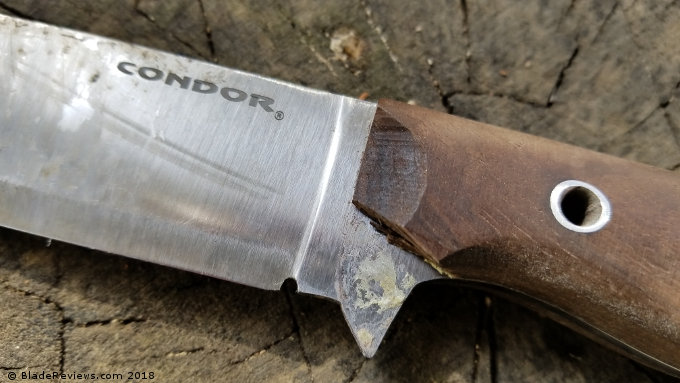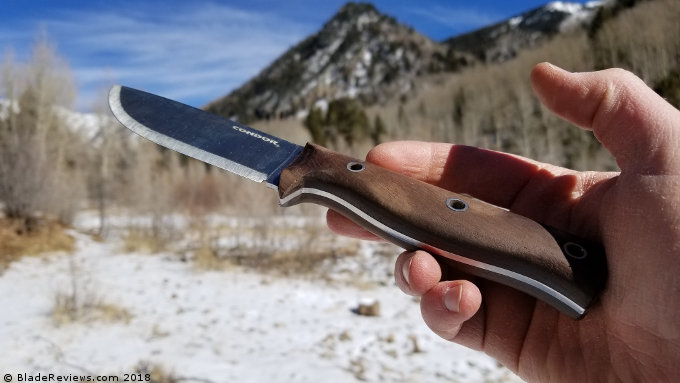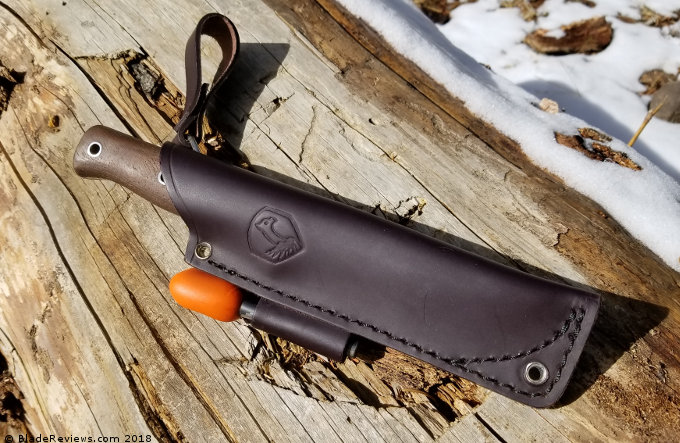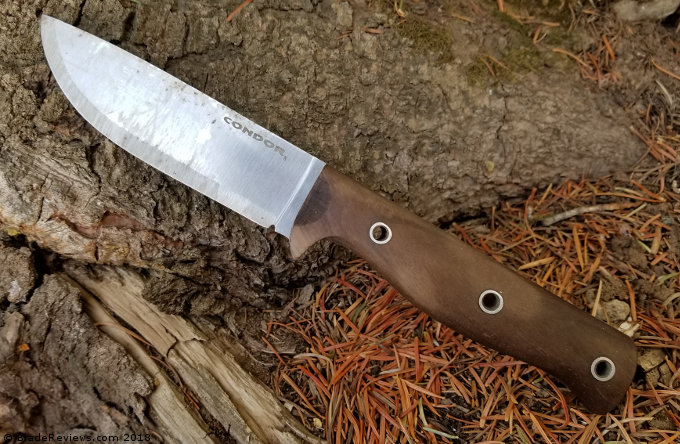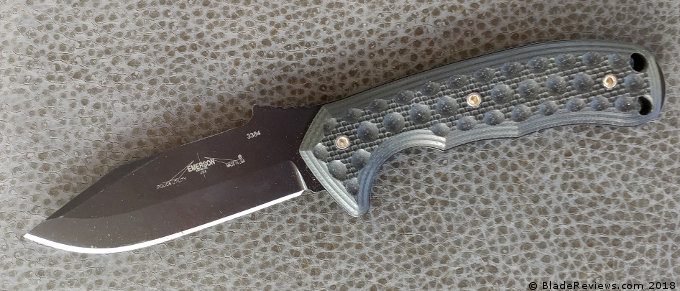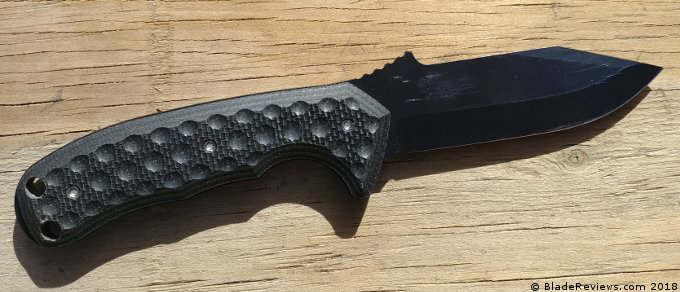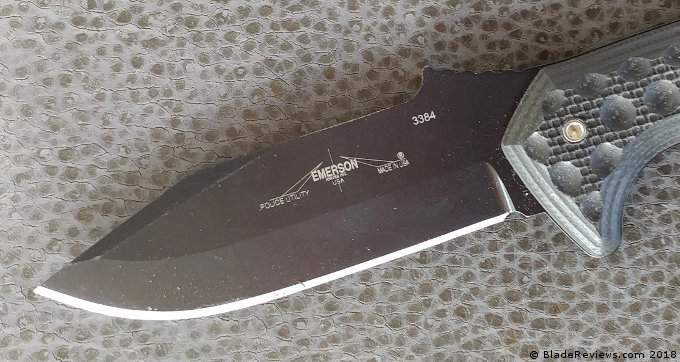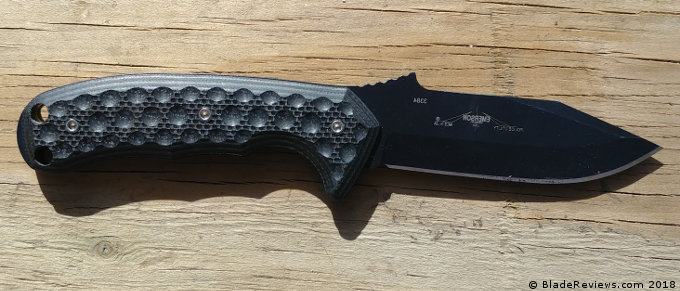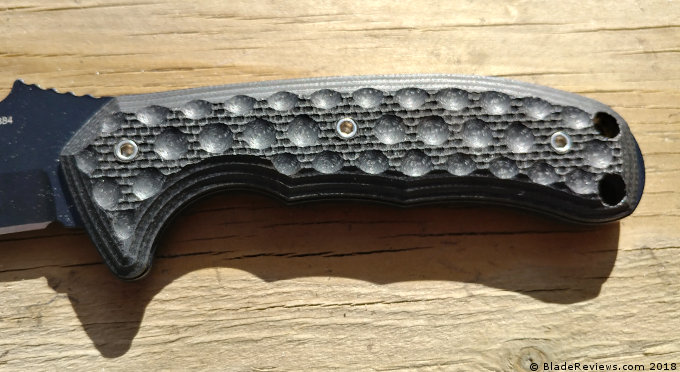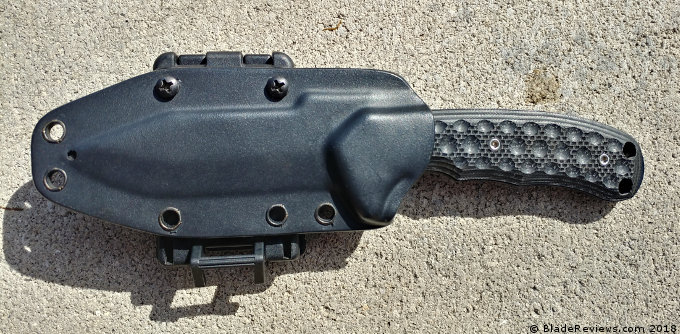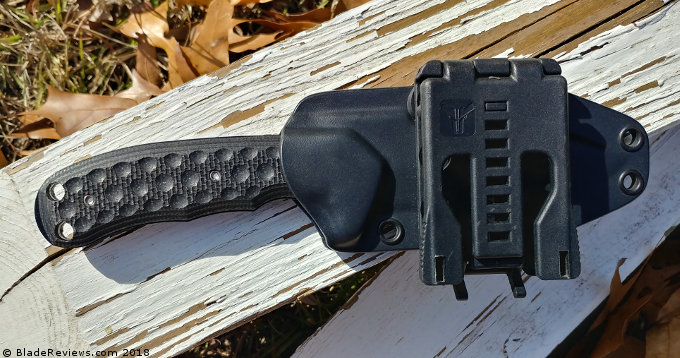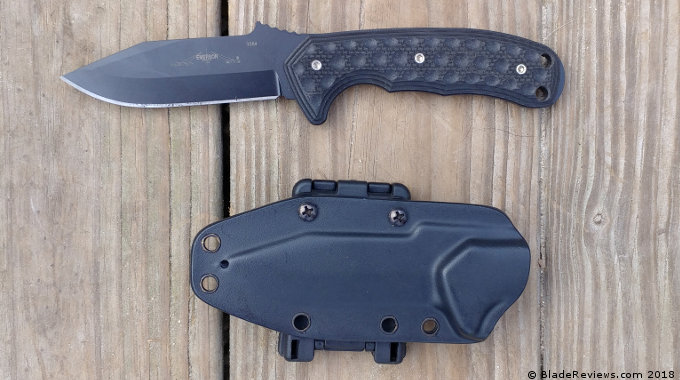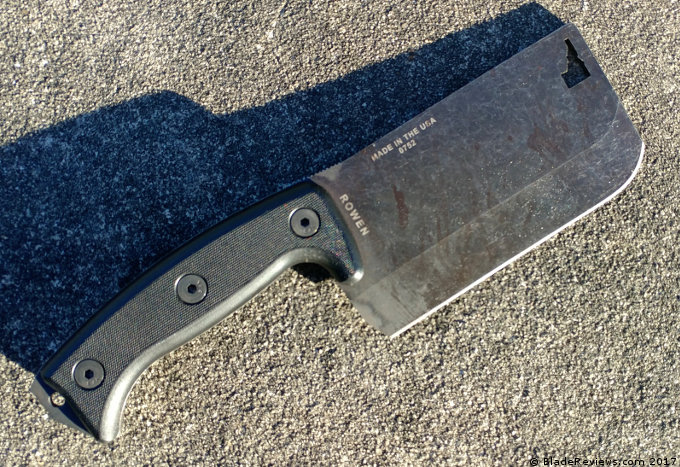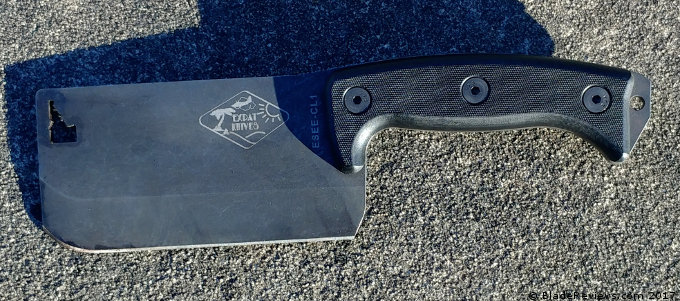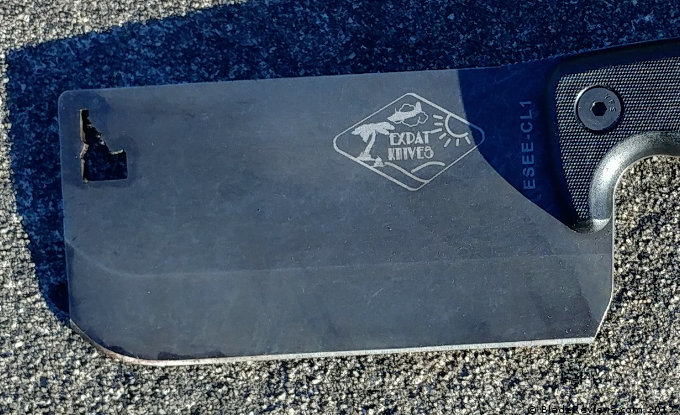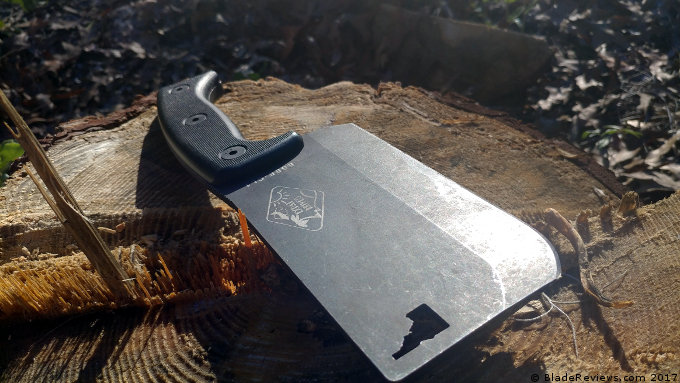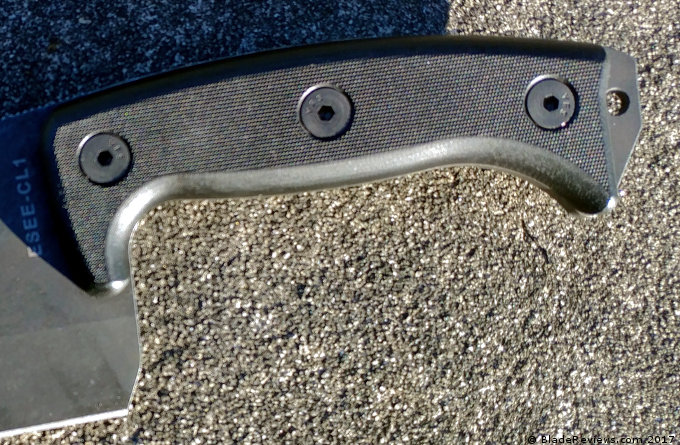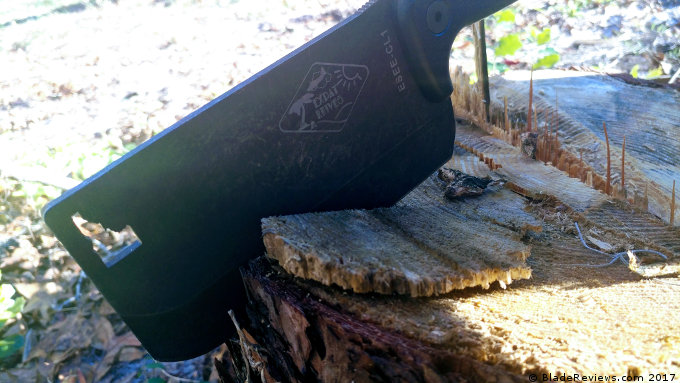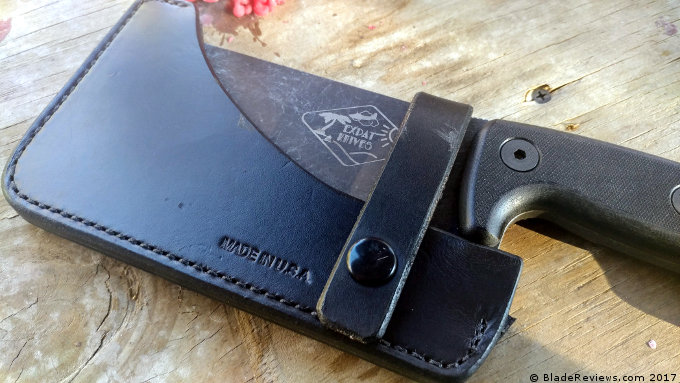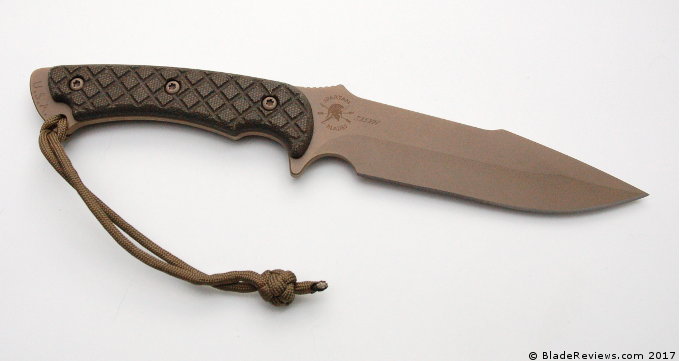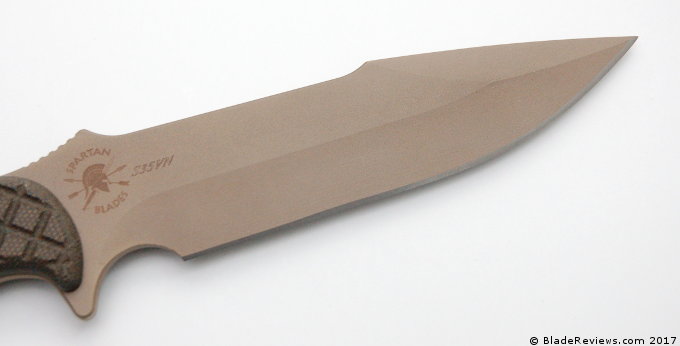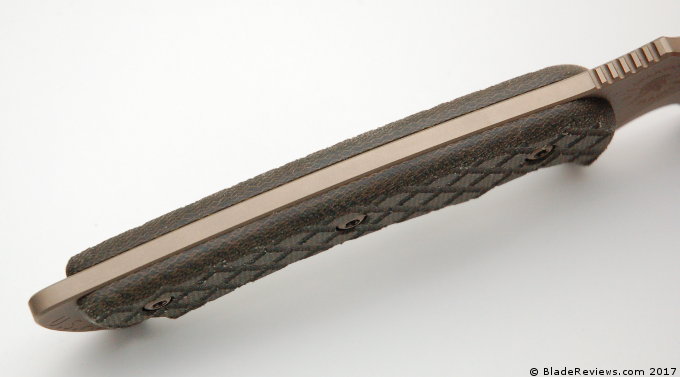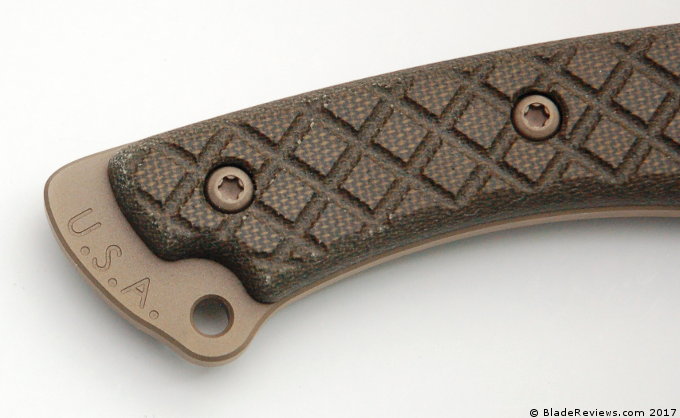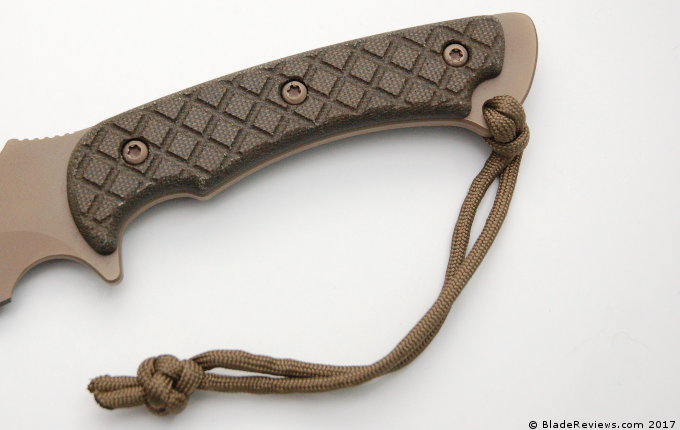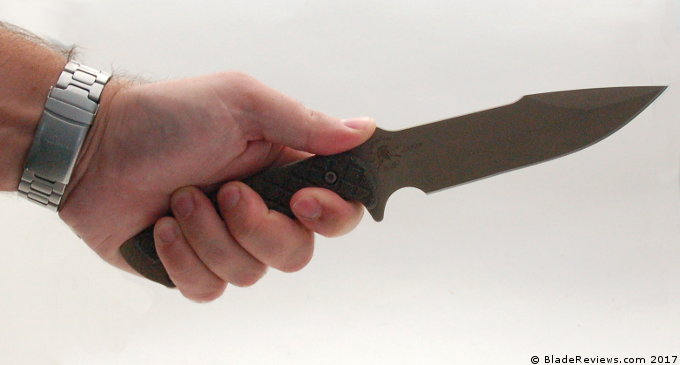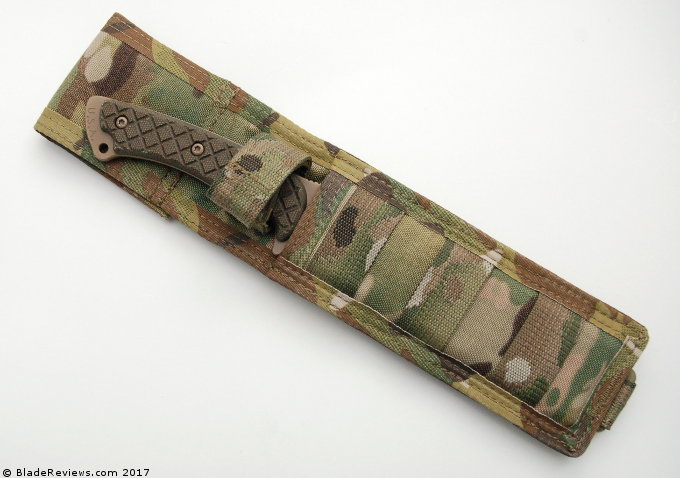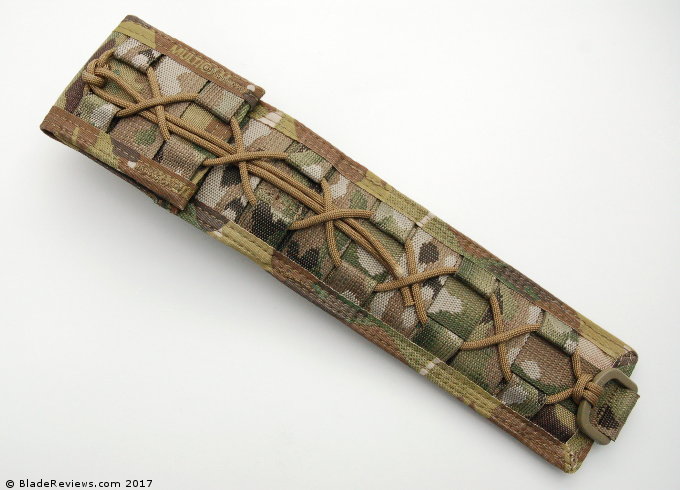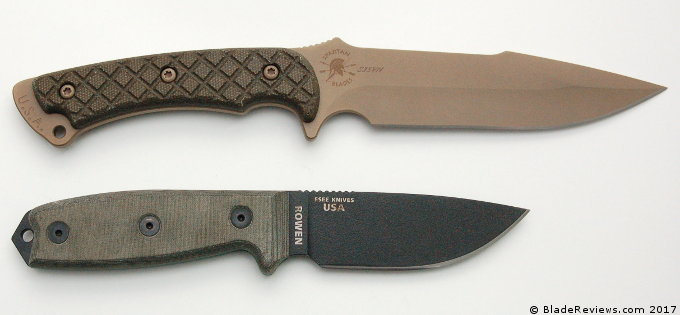Sometimes, you just need a big, dumb knife. Thus was the rationale behind my purchase of the Schrade Frontier SCHF52, a tool designed “with extreme wilderness survival situations in mind.” While I don’t consider myself an extreme sort of guy, I do certainly enjoy both the wilderness and the thought of surviving.
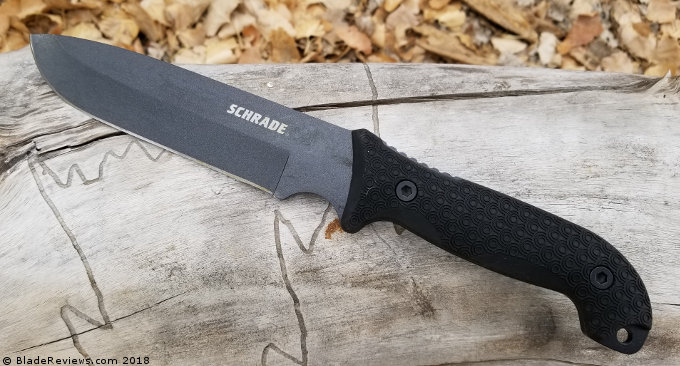
Buy the Schrade SCHF52 at BladeHQ
I tested this full-tang terror over a few blustery days in New Mexico, tackling fallen trees and dry timber on the banks of the San Juan River. It was, like many of the best things in life, a truly surprising experience. Let’s dive in.
General Dimensions and Blade Details
As always, we begin with some stats. This is one of the larger offerings in Schrade’s Frontier line, with a reach of 13-inches overall. Seven of these make up the coated blade, with 6.25-inches worth of sharpened surface. The handle adds another five, with the downward sweep of the pommel rounding out its foot-plus length. As expected on a survival-minded knife, the blade stock is wide across the shoulders – 0.23-inches, to be exact. The grip is fairly substantial, with 0.83-inches of girth where the rubber meets the palm. All told, your $30-$36 buys just over a pound of drop-point, hollow ground 1095 steel. That’s a heck of a lot of tool for not a lot of money.
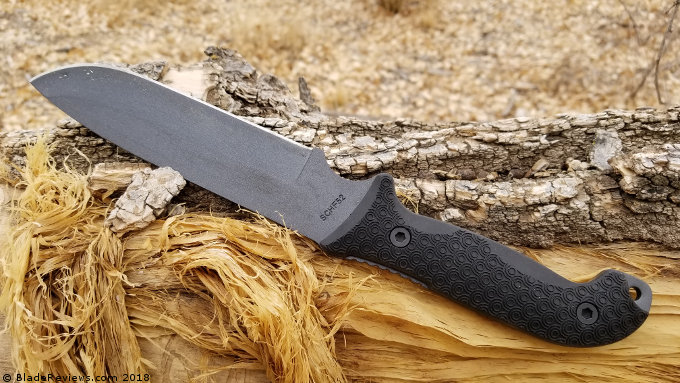
Here’s something you’ll hear echoed a few times throughout this review: I did not expect the SCHF52 to slice worth a damn. I figured chopping, cleaving, and other brute force tasks would be the Frontier’s forte. But the first time I swiped its edge across a branch, I was shocked to see a long, thick strip of wood go flying through the air. The hollow grind bit deep beneath the bark, leaving a flattened swath of wood in its wake. I did this over and over until I’d completely stripped a foot-long stick. Then I picked up another and did it again.
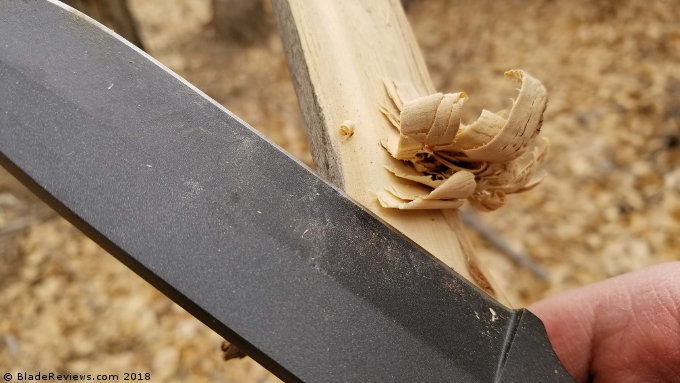
Once this initial delight wore off, I set to testing the tasks for which the Frontier was ostensibly designed. As expected, its substantial weight and durable steel make it an excellent chopper. The heft of the blade and security of its rubber grip allows you to generate impressive force on the swing, and the edge bites hard into fallen timber. The hollow grind also proved to be surprisingly durable. After bashing through a log or two, I was still able to generate some pretty fine wood shavings.
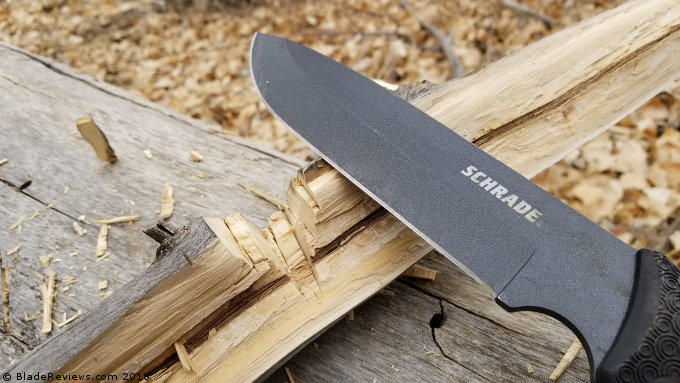
Next up was every internet troll’s favorite use for an outdoor blade – Batoning. While I generally avoid this with smaller blades, the SCHF52 is built for these sorts of tasks. So, driving it through a three-foot length of dead timber should be no problem, right?
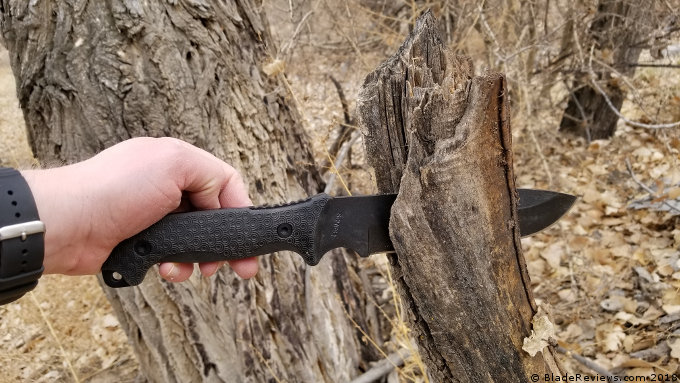
Right.
So, what can’t the 52 do? Well, it’s not going to be the greatest asset when it comes to food prep. The hollow grind will do better than others, but the overall thickness isn’t terribly helpful at the cutting board. And, as you can see, the blade coating will rub off when driven through slabs of wood. But overall, the performance of this sub-$40 knife blew me away. I expected it to be good, but not this good.
Handle and Ergonomics
The overall ergos on the SCHF52 are excellent. The texturing on its rubber cladding locks into the palm, inspiring confidence through a variety of uses. The pistol-grip style forward finger choil is excellent for delicate maneuvering, and the downward curve of the pommel fits well against the heel of my hand. You can even use this area for increased chopping leverage, wrapping your ring and middle fingers against its gentle hook. This allows for a bit more force on the swing, though the impact can be rough on gloveless hands.
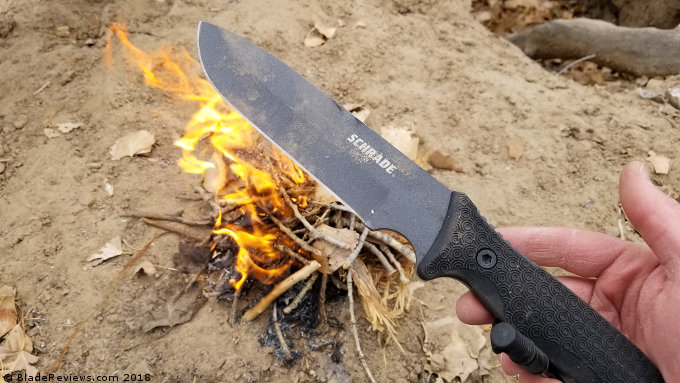
Speaking of rough, the lone sore spot here is the jimping just aft of the upper blade guard. It works fine during light carving work, but it bites at the webbing of my thumb during heavy use. It’s not the end of the world, but I’d recommend wearing gloves for impact tasks.
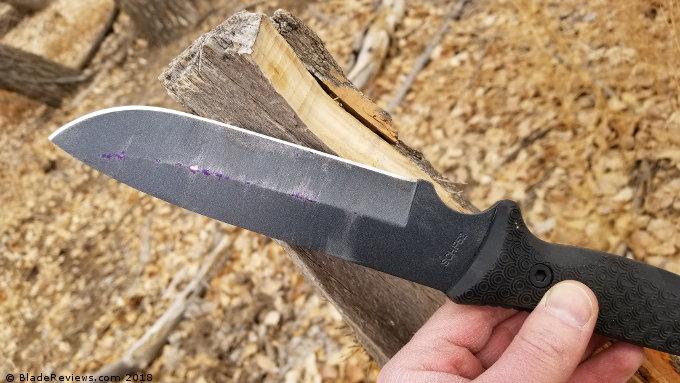
In addition to my rubber model, Schrade offers the Frontier 52 in Micarta, as well. Personally, I think the slightly spongy texture of the rubber is better suited to impact tasks, while being more attractive to my particular eye.
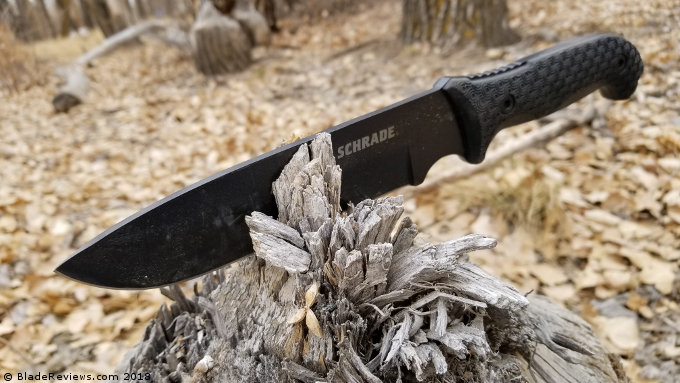
Sheath
Sheaths tend to be the weakest point on most budget fixed blades. Happily, I found Schrade’s sheath to be markedly better than expected. The nylon strap and body hold the knife securely, with a surprisingly comfortable ride for such a hefty blade. The knife slides in and out effortlessly, once you find the narrow slot in the integrated plastic sleeve. This takes a bit of attention, so be careful until you’ve developed a feel for it.
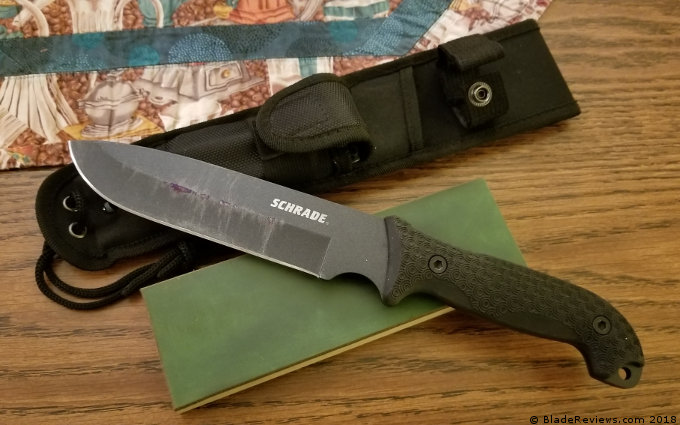
The biggest weakness I see here comes from the belt loop. It’s secured by what amounts to two pieces of folded over Velcro, pressed together around the pass-through. I think anyone who’s ever had a long-term pack, pouch, or pair of shoes with this sort of closure can see where this is going. Eventually, those sticky surfaces attract dust, fabric, and all sorts of material to their tiny claws. This limits the lifespan of the material, especially on what I consider to be a hard-use tool. If you’re looking to the Frontier as long-term companion, you may want to fuse these strips together somehow.
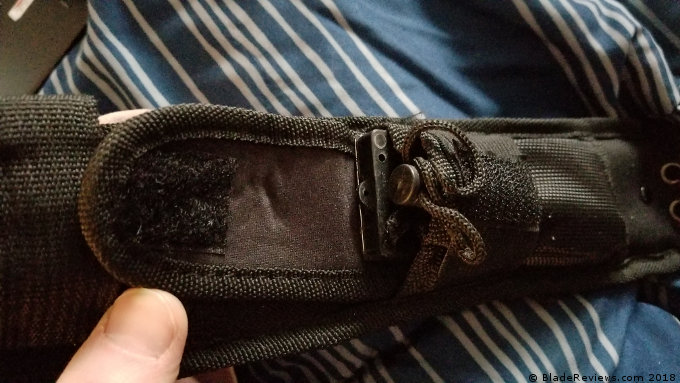
Other than this one issue, however, the sheath appears to be up to snuff. Even the little leg-loop at the bottom works well despite, as my wife and her friend put it, looking “really silly.” They’re right – Walking around with a boot lace tied around your thigh does look kinda dumb. But in the wild (or your own back yard) who really cares?
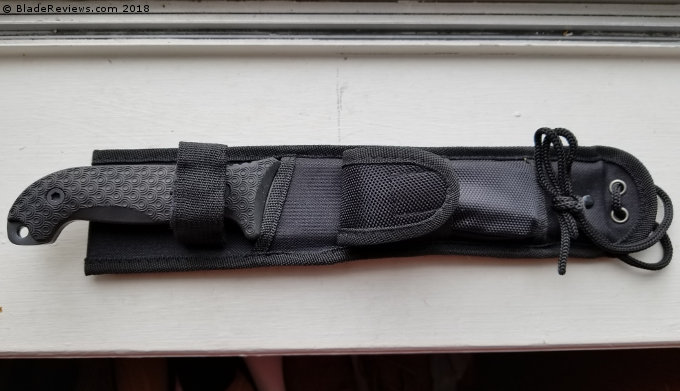
Let’s quickly touch on the included ferro rod and sharpening stone. In truth, I expected both of these add-ons to be junk. And while I was half right (the included striker steel is garbage), I was able to make fire using the ferro rod and the back of the blade. The spark output isn’t massive, but it was enough to catch the dry tinder I pulled from the side of a fallen tree. The rod is pretty thin, though, so don’t expect it to last for more than a handful of trips.
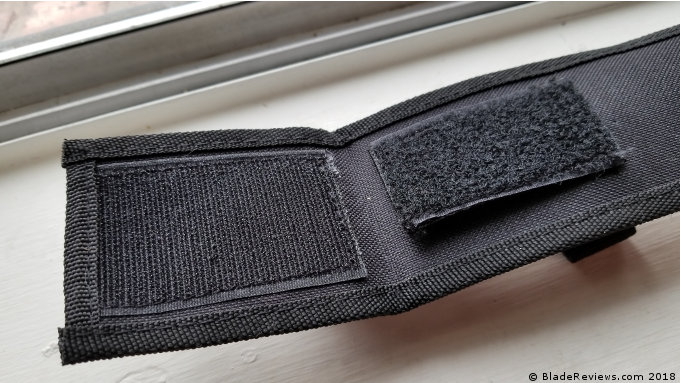
As to the sharpening stone, I haven’t had occasion to test it. The 1095 held its edge quite well, and a quick visit to the strop set it back to hair-shaving sharp. While it may not generate the polished edge of a bench stone, I have no doubt it’ll be serviceable in the field.
Schrade SCHF52 Review – Final Thoughts
This is a knife I expected to like from the get-go. It wasn’t, however, one I expected to love. But from the first slice across its very first twig, I really fell for this blade. It’s a simple, straightforward, and eminently capable design, backed with materials that walk the line between durability and disposability like no tool I’ve ever tested.
What I mean is this – I’m confident that the 1095 can hammer through a log. But, should it fail, I also know that I’m only out $30. This sort of confidence is very liberating, allowing you to focus on the fun of your outdoor adventures without babying the blade. I even brought along my Steel Will R300 Roamer for comparison, a D2-bladed knife costing twice as much. And you know what? I think I actually prefer the Schrade.
Overall, the SCHF52 gets an unqualified recommendation from me. It plays the part of the big, dumb knife to perfection, while packing just enough smarts to keep things interesting. At this price point (or even twice that), you’d be hard pressed to do any better.
- DIMENSIONS:Blade Length 6” - Handle Length 7” - Overall Length 13” - Weight 23.4 oz
- MATERIALS: AUS-8 steel drop point style blade
- SECURE: Overmold handle for confidence in your grip
- BE PREPARED: Injection molded sheath for convenient carry
- WARRANTY: This knife includes a limited lifetime warranty. If you have questions or concerns please contact Schrade Customer Service
Editor: I recommend purchasing the Schrade SCHF52 at Amazon or BladeHQ. Please consider that buying anything through any of the links on this website helps support BladeReviews.com, and keeps the site going. As always, any and all support is greatly appreciated. Thank you very much.
